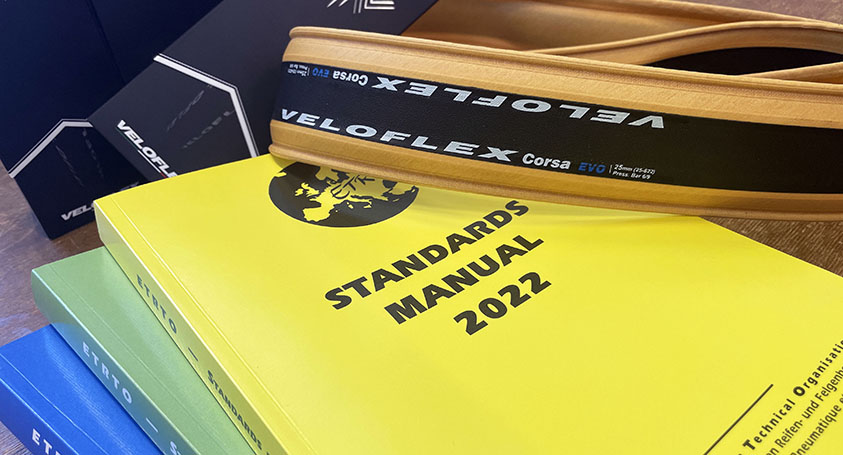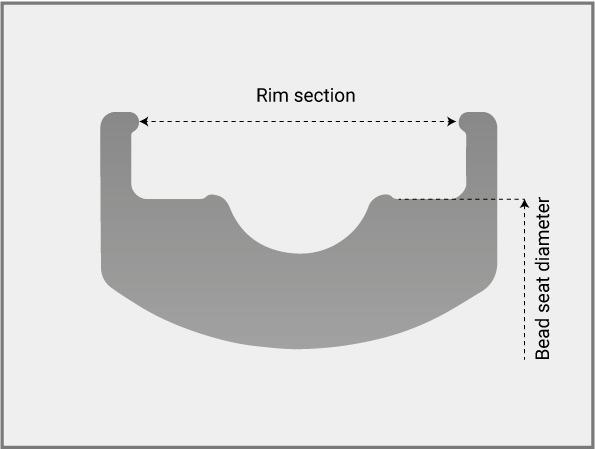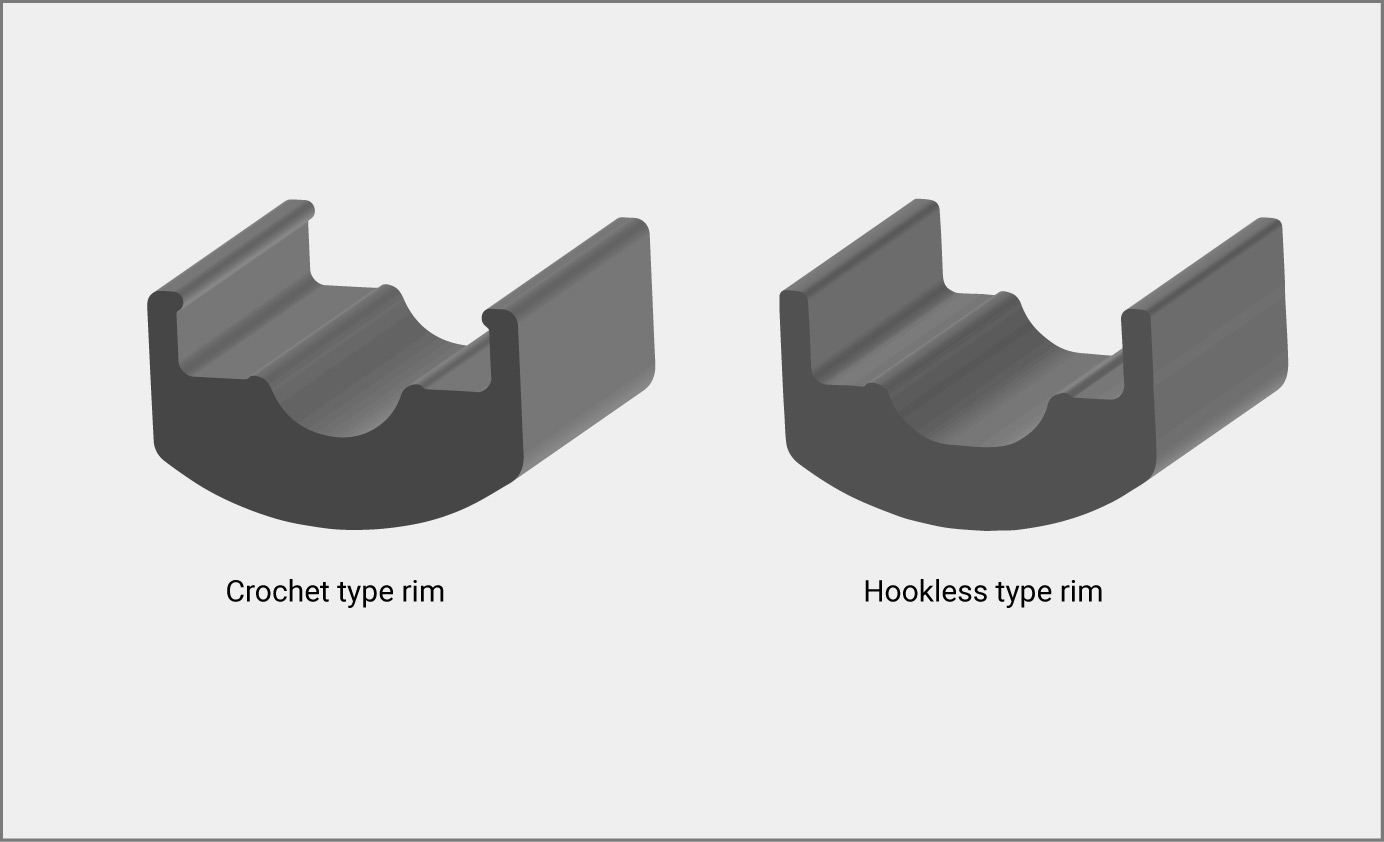Tires/rims coupling according to E.T.R.T.O. standards 2022

The new year has come and there have been substantial changes in the new E.T.R.T.O. standard manual 2022. We are glad that E.T.R.T.O. has finally updated the tire/rim matching standards, bearing in mind the fact that increasingly wider rim sizes are sold. By evaluating these matches safe, it will now be possible to install tires on measures that were previously not recommended.
In this article we are going to present some important pieces of information concerning E.T.R.T.O. standards particularly regarding road bicycles. Those who use different bikes or tire/rim measures from the following ones should keep informed on this matter to safeguard their own and others’ safety.
Also, this article was published in February 2022, so we recommend checking the standards and measures that might have been updated/changed meanwhile.
When we finally get on our bike a feeling of freedom comes over, the eagerness to explore and leave behind the stress at work, to be free, at last!
What a feeling, with a clear mind, only our bicycle and us and nobody can stop us… but before speaking about freedom we had better have a look and understand some simple information on the standards that can guarantee our safety on the road, like a regular maintenance service of our bike would do.
Some people may not be aware of the fact that, like other vehicles, bicycles should respect some standards. Yet, unlike vehicles, bicycles are not subject to fines if these standards are disregarded, so most of the times people don’t pay attention to such regulations or aren’t aware of them.
This article deals specifically with E.T.R.T.O. (European Tire Rim Technical Organization) standards. This organization sets specific standards to match rims, tires, valves for several means of transport, from bicycles to airplanes, in order to establish regulations that tires and rims producers must follow to guarantee a safe matching between the different components.
Without these standards there would be such chaos because of the infinite types of tires, shapes, rim sizes and, as a consequence, incompatible matching. Today, however, owing to the very wide range of rims and tires available, choosing a suitable tire to mount on a certain rim can be rather difficult.
Most cyclists, after measuring the diameter – 28’’, 26’’, etc. – and choosing the type of rim they like the most, pick a tire that may fit on that diameter and that possibly has received positive reviews by a friend. After that, they mount the tire, unaware of the risks they may run.

So, what did they forget? Besides the diameter of the rim that must match the tire we install, we must check which tires can be mounted on those rims (as tires are more frequently replaced, unlike rims). This could lead to some problems in terms of matching the two: tires unsuitable for a certain use, risks of tire bead leaving the rim or even the impossibility to install a tire and maintain the pressure for tubeless tires.
What shall we do? Just check the following E.T.R.T.O. chart, look for your rim size (mm) and choose the right tire according to the sizes that are reported as suitable and safe and that can guarantee the matching.
| Nominal tire section width |
Internal section of the rim approved by E.T.R.T.O. | ||||||||||||||
|---|---|---|---|---|---|---|---|---|---|---|---|---|---|---|---|
| --- | 15 | 16 | 17 | 18 | 19 | 20 | 21 | 22 | 23 | 24 | 25 | 26 | 27 | 28 | 29 |
| 18 | x | ||||||||||||||
| 20 | x | x | x | ||||||||||||
| 23 | x | x | x | x | x | ||||||||||
| 25 | x | x | x | x | x | x | x | x | x | ||||||
| 28 | x | x | x | x | x | x | x | x | x | x | x | ||||
| 30, 32, 33 | x | x | x | x | x | x | x | x | x | x | x | ||||
| 35, 37 | x | x | x | x | x | x | x | x | x | x | x | x | x | ||
| 40, 42, 44, 45 | x | x | x | x | x | x | x | x | x | x | x | x | x | x | |
Hookless rims, what’s the point?

These days, besides crochet rims (standard/with hooks), hookless rims (without hooks) are also available, as they are easier to produce than the standard ones that need hooks for the tire beads of the clincher tires.
Hookless rims are also mentioned in E.T.R.T.O. standards and they follow the same table of guaranteed matches as the crochet rims.
A fundamental aspect highlighted by E.T.R.T.O. is that as far as hookless rims are concerned, the maximum pressure at which tires can be safely inflated is 5 bars. We would like to underline though that for both hooked rims and hookless rims, the maximum pressure must always be compliant with the indications of the rim manufacturer even if the minimum recommended pressure on the tire is higher.
To conclude, some final recommendations to ride safe with your bicycle…
We would like to remind you that our clincher tires are only compatible with crochet rims installed with an inner tube, while our TubeLess Ready tires, marked by the initials TLR, can be installed on both crochet and hookless rims. In fact, after several tests we can confirm that our TLR tires, thanks to the non-extendable Zylon rings, can be safely installed on hookless rims.
Installing our tires (like the ones of any other producers that complies with E.T.R.T.O. standard) on a rim whose match can’t be found in the table, it is at the customer’s own risk and peril and to the detriment of objects and/or people as such match is non-compliant with the standards.
If someone has already used a certain rim/tire match this does not guarantee that it could work for you.
Asking for the possibility to mount a non-standard does not guarantee a safe installation and use either, the tables are clear specifically to avoid any misunderstanding.
The more we move away from the standard rim/tire match the more the risk is higher and likely to happen.
Since the new E.T.R.T.O. regulations were released, we have started updating the information on our packaging, labels and website starting from February 2022. It will take some time for all this information to reach consumers, though. In order to benefit from the newly released update right away, we want to give our green light to the installation of the latest tire series released (Corsa EVO, Corsa EVO TLR, Corsa Race, Corsa Race TLR and Record) on standard-compliant rims (as shown in the table). We recommend reducing the proper pressure in accordance with the increase in the rim section and paying attention to the pressure limits indicated by the rim manufacturer.
Always check your tire pressure to see if it complies with the regulations set by the producer of the tires and rims, choosing the lowest maximum pressure between the two that are recommended and by checking the tire pressure charts that are provided.
Maintenance and consistent control of your bike are the first and most important step to go on a ride and relax.
Enjoy your ride!
 English
English